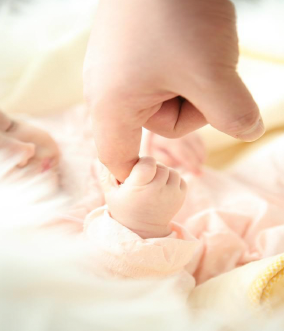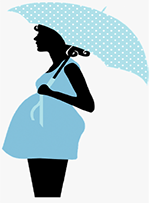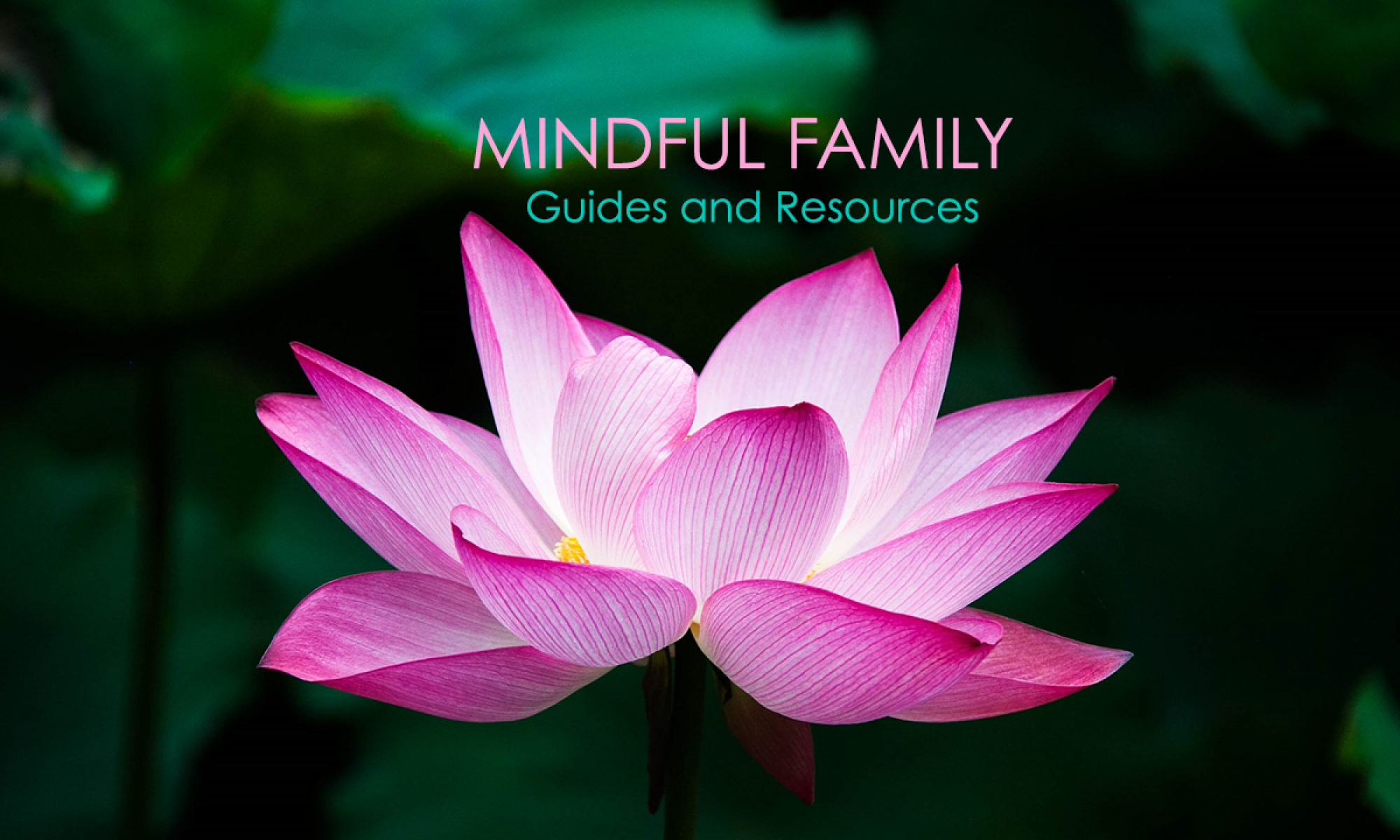By Emily Hannaford and Andrea Acosta
Conception in a nutshell
Conception is generally defined as the “union of a single egg and sperm” (Perry, Hockenberry, Lowdermilk, & Wilson, 2010, p.172). Once conception has occurred, pregnancy begins. When talking about conception, it is important to mention preconception, as changes that occur during this time affect the conception period directly. It is also important to note that conception involves achieving it as well as preventing it. The following information will focus on conception and how mindfulness techniques can help achieve it

Preconception
Preconception refers to the time before conception occurs. During this time, nurses and health care professionals can act early and provide education to promote health such as obtaining adequate rest, eating a well-balanced diet, and exercising regularly (Perry et al., 2010). It is also important to assess for risk factors that could potentially hinder a healthy pregnancy, such as chronic conditions and lifestyle habits including diabetes and substance misuse. Once a thorough assessment has been made, interventions can be put in place to improve health outcomes and chances of conception.

Infertility: Why is this happening?
The preconception stage can include the unfortunate period of infertility. Infertility is important to talk about when discussing conception as it is common in about 15% of couples accessing the health care system (Perry et al., 2010). Infertility is defined as the inability to conceive despite at least one year of unprotected intercourse (Campbell, 2014). Infertility has become a common concern for couples due to the change in conception age that has occurred over time (Baird et al., 2005). Because today’s couples are delaying the age of conception and increased age is associated with declining fertility, many are struggling to conceive. It is important to note that fertility declines with age in both males and females and therefore, can affect both sexes.

The struggle to conceive can be for unknown reasons for both partners but can also be attributed to ovulatory disorders, tubal damage, uterine concerns, and the male partner specifically (Campbell, 2014). In order to diagnose infertility, various assessments need to be conducted such as a history for female and male, lab work, and physical exams (Perry et al., 2010). Following these assessments, it is possible that the couple may need to undergo fertility treatments, such as in vitro fertilization. The process of these assessments and treatments can be emotionally and physically taxing for couples, which can further hinder fertility (Li, Li, Long, Liu, & He, 2016).
Mindfulness & Conception: A Concept
Mindfulness has been used with some success to promote mental and physical well-being in those struggling with infertility and conception. Mindfulness is essentially awareness and it can refer to what is happening, how it happens, and when it happens (Willett, 2018). Mindfulness during conception or while trying to conceive can help couples live in the moment and become more aware of negative emotions in order to transform them. Mindfulness intervention for those struggling with conception has been known to decrease both anxiety and depression symptoms. The use of mindfulness on conception and fertility was demonstrated by Li et al. (2016) in a study of mindfulness-based intervention for women undergoing in vitro fertilization. Li et al. (2016) focused their study on interventions such as mindful breathing, thought and feeling awareness, and discussion of mindful attitudes such as acceptance and letting go. They found that women struggling with fertility who were practicing mindfulness-based exercises weekly had significantly better quality of life and a higher incidence of pregnancy than women in the control group, who did not practice mindfulness.

Mindfulness group therapy also proved to be protective against depressive symptoms and negative thoughts in those struggling with infertility and conception in a study by Galhardo, Moura-Ramos, Cunha, & Pinto-Gouveia (2018) focused on mindfulness-based programs. Galhardo et al. (2018) found that women who received mindfulness-based therapy that promoted self-efficacy suffered from less depressive symptoms related to infertility compared to those who did not receive the therapy. This is significant as difficulty conceiving is associated with feelings of decreased self-efficacy, which can contribute to feelings of depression. The group-based therapy allowed women to voice concerns regarding their difficulties with conception such as, “what if this does not work?” without suppressing them. This, therefore, allowed for these feelings to lose some of the impact and power they had on their self-efficacy and consequently, feelings of hopelessness associated with depression decreased.
How can I be mindful?

Mindfulness does not necessarily come in the form of group-based mindfulness therapy such as the above. Because of the toll that infertility can take not only on physical, but mental health, methods to prevent depression and anxiety in couples with infertility have been created. One of these methods includes a mindfulness app called MindfulSpot (Monteiro, Galhardo, Cunha, Couto, Fonseca, & Carvalho, 2016).
MindfulSpot was created for those struggling with infertility to use on mobile devices as it provides text and audio content focused on the practice of mindfulness. The app allows users to practice mindfulness during anytime of the day and also provides users with information on some of the ways that infertility can impact quality of life.
While limited data has been collected on the effectiveness of MindfulSpot, it was specifically designed to help those struggling with infertility to cope through the use of mindfulness.

Any person struggling with infertility and its emotional and mental effects can use the mindfulness techniques described in the MindfulSpot app above to facilitate conception. Mindfulness techniques focus on awareness and improving perceptions of one’s self in order to deal with difficulties with conception. Knowing that it is possible to succeed and cope through mindfulness can prevent those struggling with conception from developing symptoms of anxiety and depression. It is important to note that not all those who struggle with depression need Mindfulness -based therapy or support. However, mindfulness-based interventions have been proven to decrease negative stress that can further hinder conception (Li et al., 2016).
The following are some resources that can be accessed for more information on this topic, starting with a video we made to help you relax and practice mindfulness.
Try Our Mindful Breathing Video
Video created by Emily Hannaford and Andrea Acosta, 1:41 minutes, November 2018 in Adobe Spark Video
Mindful Conception Resources
Essential Baby:Trying to Conceive

The Essential Baby website welcomes the user with many different topics related to family life including conception, pregnancy, birth, babies and toddlers. The subsections related to conception covered in this website include trying to conceive, fertility, ovulation, in-vitro fertilization, adoption and fostering, and surrogacy. There is also a sub-section whereby the user can access tools related to conception such as an ovulation calculator, a due date calculator, a baby name forum, and recommended baby product listings. The website interface is user-friendly and displays images to give the viewer insight to the content of each hyperlink.
URL: http://www.essentialbaby.com.au/conception/trying-to-conceive
BabyMed
The Pregnancy and Fertility Website To Help You Get Pregnant Now!

BabyMed is a website aimed to promote guidance for couples trying to achieve and maintain a healthy pregnancy. The creator of the BabyMed website is Dr. Amos Grunebaum. He is an OBGYN and professor at New York Medical School. His inspiration to create this website stemmed from the realization that many existing websites provided inaccurate information surrounding the topic of conception and pregnancy. Topics covered under the “getting pregnant” tab include before trying to get pregnant, getting pregnant, sex and getting pregnant, fertility awareness, ovulation and fertility, preconception planning, and special circumstances. As this website covers a wide range of relevant topics, it would be wise to enter into this resource with an open mind as there is quite a lot of information.
Babycenter Canada
Actively Trying for A Baby

BabyCenter Canada is a website-based community dedicated to providing medically reviewed information and support to couples actively trying for a baby, new parents, and those who are expecting. The authors recognize that bringing a baby in to the world is a pivotal moment in a parent’s life and aims to create a smooth and joyful transition into parenthood. The information available on this website originates from medical professionals such as obstetricians, pediatricians and midwives. Research and fact checking each article BabyCenter publishes is one of the ways that they ensure the quality of the website’s materials. Topics specific to conception here include trying for a baby, sex and contraception, as well as infertility and trouble conceiving.
This community prides itself on being a welcoming space to help address questions and concerns related to conception and parenthood. They value presenting well- rounded perspectives to address problems and recognize that conception and pregnancy can be a very individual experience.
URL: https://www.babycenter.ca/c2/actively-trying-for-a-baby
Women’s Health
Trying to Conceive

The Office on Women’s Health is an organization that takes a leading role to improve the health of women by providing education and awareness (via information sharing, programs, and activities) surrounding women’s health matters to both the public and health professionals. This website is well designed with an organized layout and appropriate headings to help the user navigate the site. The subject matter related to conception on this website includes fertility awareness, fertility pattern charting, infertility, when to see your doctor, counseling and support groups. The drop-down menus guide the user to further information on each heading.
URL: https://www.womenshealth.gov/pregnancy/you-get-pregnant/trying-conceive
What to Expect: Getting Pregnant

This resource has a famous background since it was developed by the author of the book with its same name! The content on the website comes from the brand “what to expect” which is directly from the book written by Heidi Murkoff. The site offers advice on topics from pregnancy to what are the best baby products on the market.
The very first tab seen on the site is called “getting pregnant” and by clicking it, individuals can access information on preconception and what to do before conceiving as well as an all-you-need-to- know section on fertility. The fertility section offers tips for conceiving, such as eating fertile friendly foods for both males and females! The What to Expect brand also offers the information on their site via mobile apps and are free of charge.
URL: https://www.whattoexpect.com/getting-pregnant/
Pathways to Parenthood for LGBT People

The Pathways To Parenthood for LGBT people is a website from the National LGBT health education center. It guides the reader through various clinical case vignettes to exemplify certain questions or issues that LGBT couples may encounter while considering the idea of having a baby. The document then transitions into a discussion of information and resources that can be considered in response to the issue presented in the vignette. For example, one of the vignettes addresses the idea of two male partners considering surrogacy. The discussion following the vignette guides the reader about what information is important to consider in relation to surrogacy such as traditional and gestational surrogates, estimated surrogacy costs and known and unknown egg donors. Other topics addressed throughout this document are adoption and foster parenting, donor insemination and IVF, and organizational support for LGBT parents.
URL: https://www.lgbthealtheducation.org/wp-content/uploads/Pathways-to-Parenthood-for-LGBT-People.pdf
In Vitro Fertilization for Infertility
from HealthlinkBC

HealthLink is a trusted resource whereby the user can obtain medically-approved information by phone, the website, or the Healthlink app. HealthLink offers a way for users to find health services accessible to them whether they need to find health resources located near their residence or health information available in their native language. There is a wealth of information that is returned when the user searches ‘conception’. Included in these topics are how pregnancy (conception) occurs, ethical and legal concerns of infertility, insemination and infertility, tips for healthy pregnancy habits, and fertility problems. The great feature of this resource is that if you prefer to seek out information in private, the website is easy to navigate whereby the user types in a keyword into the search bar and is then directed to information related to that topic. If the user prefers to speak over the phone with a healthcare professional including a nurse, pharmacist, or dietician in real-time, that option is available to them by dialing 8-1-1.
URL: https://www.healthlinkbc.ca/health-topics/hw227379
Fertility Matters

The Fertility Matters website is a great resource for those who are struggling with fertility and conception. All of the information on the site is written by Canadian fertility doctors who provide the information on a non-profit basis. These Canadian doctors aim to provide individuals with information regarding conception and fertility that is easy to understand. One of the strengths of this resource is that it normalizes the stress that accompanies the difficulty some couples have conceiving and offers to provide help. There are various options available to those who visit the site and it is not just for those who are struggling with conception. The site offers tips for those who have decided to start trying to conceive as well as those who have been diagnosed with infertility. One of the key features of this website is a question and answer section whereby individuals can address their curiosities and receive dependable answers in a timely fashion.
URL: http://fertilitymatters.ca
Conception Explained Video

This is a visual and auditory representation of the process of conception. It demonstrates how the sperm cells race to the egg cell, the dissolution of the egg’s membrane, and the fertilization of the egg by one single sperm cell leading to the formation of a zygote and subsequently the embryo. This is a valuable resource because it offers a different way for the viewer to learn about conception. While this video is quite brief, as it is just over two minutes long, it’s an appropriate resource to use as a starting point if the targeted audience has an interest in the biologically process behind conception but is wanting to avoid becoming overwhelmed with the level of detail found with other resources.
URL: https://youtu.be/DGyRD9HnXVs
Sex & U

SexandU is a Canadian website supported by the Society of Obstetricians and Gynaecologists of Canada aimed to provide relevant and credible information about sex. The range of topics include sexual activity, LGBTQ awareness, STI’s, contraception, pregnancy, and consent. The section addressing conception defines what ovulation is and discusses specific fertility awareness-based methods (i.e. basal body temperature, menstrual cycle tracking, ovulation kit) of detecting the fertile window in an effort to target successful conception.
References
Baird, D. T., Collins, J., Egozcue, J., Evers, L. H., Gianaroli, L., Leridon, H., Sunde, A., Templeton, A., Van Steirteghem, A., Cohen, J., Crosignani, P. G., Devroey, P., Diedrich, K., Fauser, B.C., Fraser, L., Glasier, A., Liebaers, I., Mautone, G., Penney, G., & Tarlatzis, B. ESHRE Capri Workshop Group. (2005). Fertility and ageing. Human Reproduction Update, 11(3), 261-276. doi:10.1093/humupd/dmi006
Campbell, T. (2014). infertility. Nursing Standard (Royal College of Nursing (Great Britain) : 1987), 28(40), 18-18. doi:10.7748/ns.28.40.18.s25
Galhardo, A., Moura-Ramos, M., Cunha, M., & Pinto-Gouveia, J. (2018). How does the mindfulness-based program for infertility (MBPI) work in reducing depressive symptoms? Mindfulness, 9(2), 629-635. doi:10.1007/s12671-017-0805-z
Li, J., Li, M., Long, L., Liu, Y., & He, W. (2016). Effects of a mindfulness-based intervention on fertility quality of life and pregnancy rates among women subjected to first in vitro fertilization treatment. Behaviour Research and Therapy, 77, 96-104. doi:10.1016/j.brat.2015.12.010
Monteiro, B., Galhardo, A., Cunha, M., Couto, M., Fonseca, F., & Carvalho, L. (2016). MindfulSpot: A mindfulness mobile app for people dealing with infertility. European Psychiatry, 33, S609-S610. doi:10.1016/j.eurpsy.2016.01.2279
Perry, S., Hockenberry, M., Lowdermilk, D. & Wilson, D. (2010). Maternal Child Nursing Care (4th ed.). Maryland Heights, MO: Mosby
Willett, E. (2018). Being Mindful – Having a Positive Outlook When Trying to Conceive. Retrieved from
https://natural-fertility-info.com/mind-over-matter.html?fbclid=IwAR2x9tjxG e8EvVc4fxlRhiC4_9q3MoGPcy7lAT1bU6am0KS1rJIqajgAXeo

